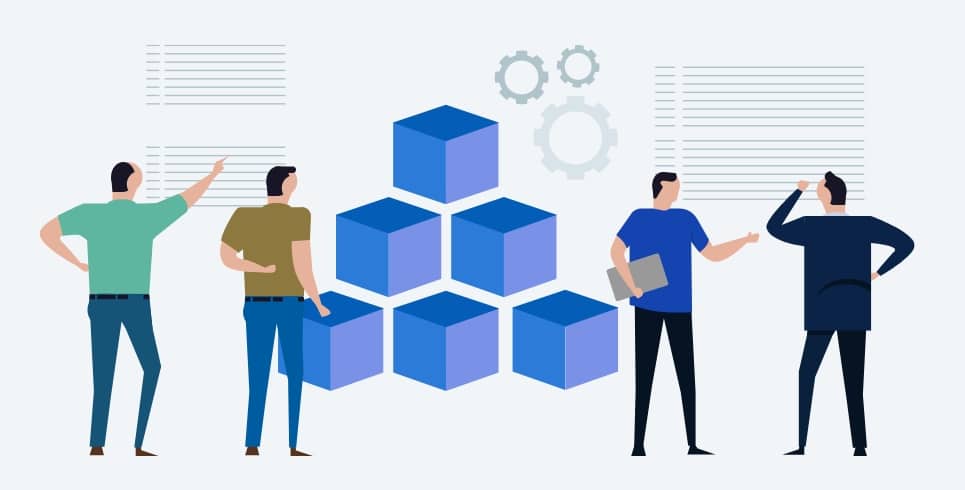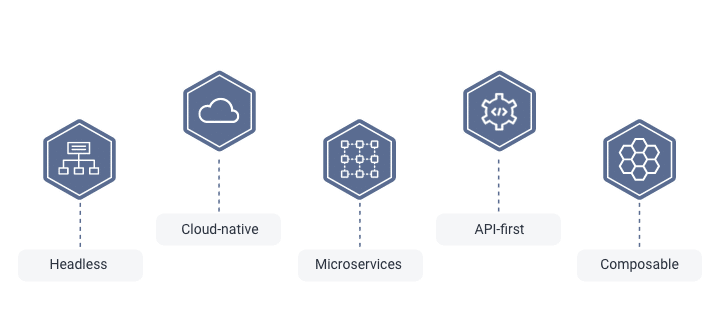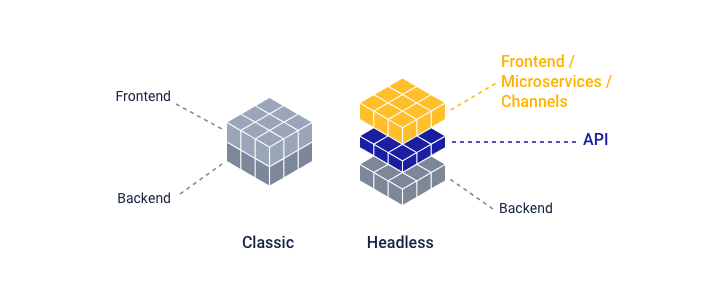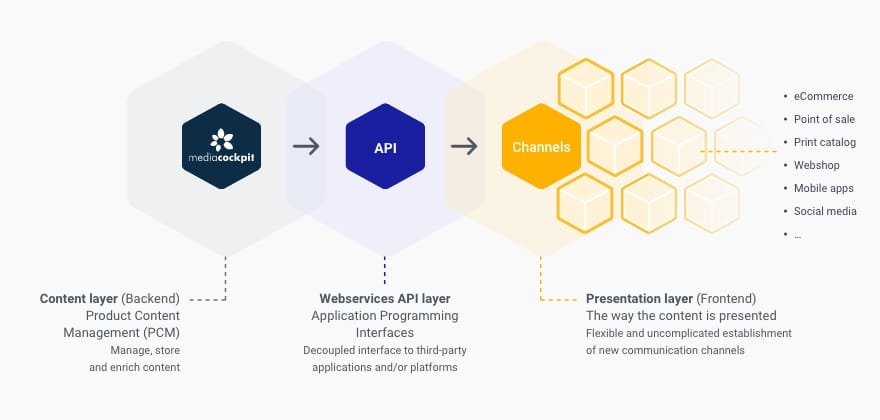Blog
Headless Product Content Management – but how?

Today’s discussion about software and technology topics is characterized by numerous buzzwords. Headless is undoubtedly one of them – as are cloud-native, microservices, API-first or composable architecture. In fact, all these terms are almost inseparable, because they all describe partial aspects of an open and flexible IT infrastructure as a prerequisite for the digital transformation of business processes.

Cloud-native software is developed from the ground up in the cloud. Such solutions consist of individual microservices, i.e., granular functional modules that operate completely independently of one another and can be scaled individually according to need and performance requirements. The advantage of this is that resources can be used very effectively and performance peaks can be reliably absorbed. This is relevant, for instance, for companies that have fluctuating performance requirements for data processes such as importing, tagging and editing product images due to seasonal product range changes and campaigns.
API-first refers to an approach in software development that describes an open and reusable design of APIs and therefore enables a particularly flexible system architecture. As a result, new digital business models and applications can be developed quickly and agilely, which in turn access existing data storage systems.
API-first is the basis for headless software. These solutions focus on the technology that manages, transforms and provides the data, defines rules and maps workflows. The user interface, on the other hand, is not an integral part of the solution, but can take on all kinds of forms. Sales apps, online stores and social media campaigns, for instance, can be filled with product content from the same data management system at the same time, without companies having to accept any limitations in terms of presentation. Of course, the API-first approach means that all other tools and neighboring systems can also be supplied with the data stored in the solution.
Composable architecture describes the entire construct of an API-first infrastructure in which individual microservices and applications are combined very flexibly, exchanged, and supplemented by additional complementary services. A great deal has happened in this area in recent years, particularly in the commerce sector, but corresponding developments can also be observed in the area of upstream product content management.
Not all content is the same
In particular, this is due to the growing importance of product content for a company’s turnover. Not only since the pandemic have companies felt more and more pressure to open up digital business areas and to be successful in digital commerce. Global competition and rising customer expectations are intensifying this need, and more and more companies are reaching their limits with their technical frameworks.
Digital commerce means that companies have to be present on many digital channels at the same time. On the one hand, product messages should be consistent and represent the company’s brand. On the other hand, product content must be customized to provide the best possible customer experience. At the same time, the speed of communication and response to customer requests is becoming increasingly critical to success, and not only channel-specific rules and communication guidelines must be adhered to – the respective target group must also be addressed as accurately as possible.
This means that the same product information, images and videos have to be delivered in ever-changing compositions and formats. These requirements represent a huge challenge for marketing teams and communications managers. This cannot be achieved without technological support – and the efficiency and effectiveness of the processes depend to a large extent on the system architecture and the data processes based on it.
Advantages of Headless
Headless is the ideal solution for this challenge, as data management – i.e. the storage and distribution of product data and media content – is handled separately from the presentation of this product content in a frontend. With the help of APIs that provide full access to the data as well as the defined rules and business logic, any interfaces can be built on this foundation.

Companies no longer have to compromise on the design of their touchpoints with potential and existing customers. Creating effective product experiences that increase conversion rates is one of the most important operational goals and an optimal customer experience is crucial for this. Headless solutions provide the perfect basis for this.
mediacockpit: Headless Product Content Management

As state-of-the-art product content management, mediacockpit uses a headless architecture and enables customers to establish new communication channels in a very flexible and uncomplicated way to bring them to life with context-dependent and optimally prepared product content. Regardless of whether the product messages are delivered at the point of sale, in the print catalog, in the web store, or in the mobile app: mediacockpit provides all channels reliably and in real time with perfectly composed product messages.
Accomplir plus ensemble
Nous croyons en la valeur de la collaboration et de l’échange. Cela s’applique aussi bien à nos projets clients, desquels nous tirons de nombreuses informations précieuses pour le développement de nos produits, et à notre réseau de partenaires en pleine expansion, avec lequel nous soutenons nos clients dans leur numérisation.


